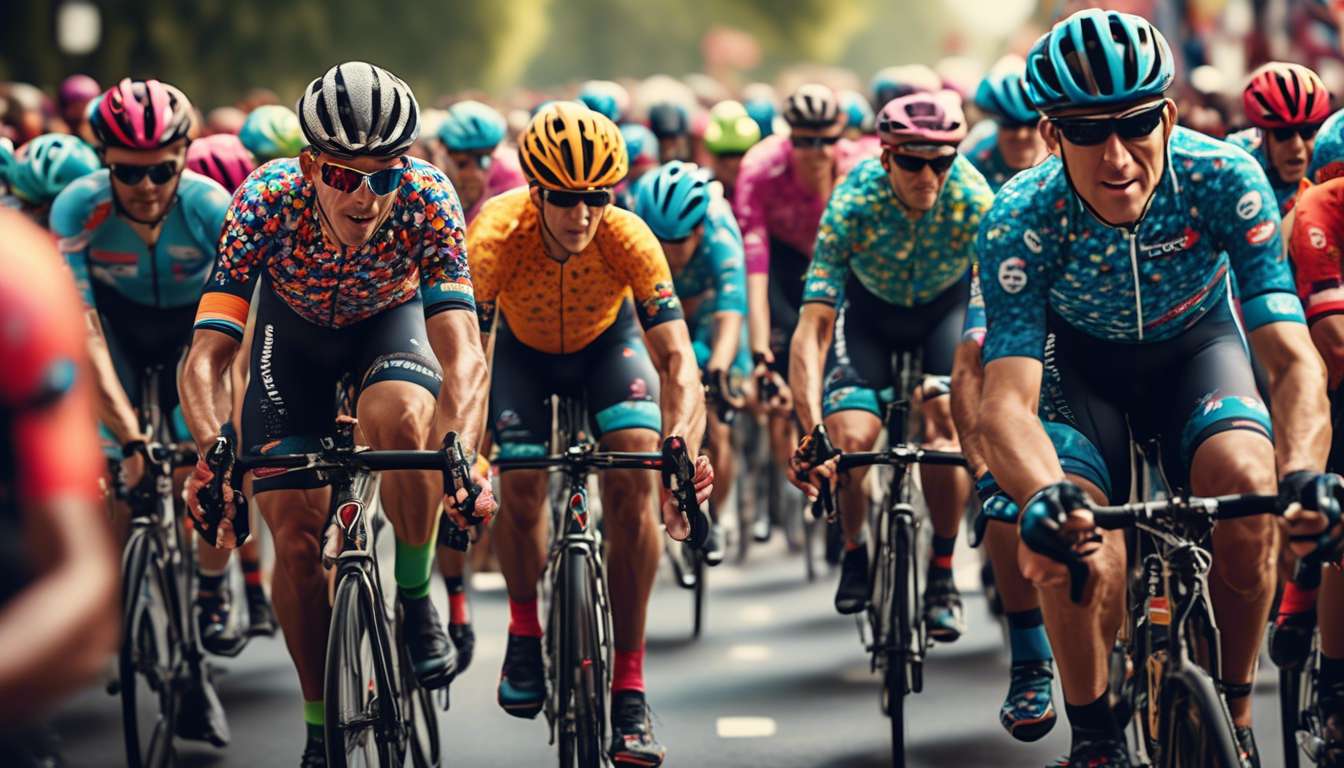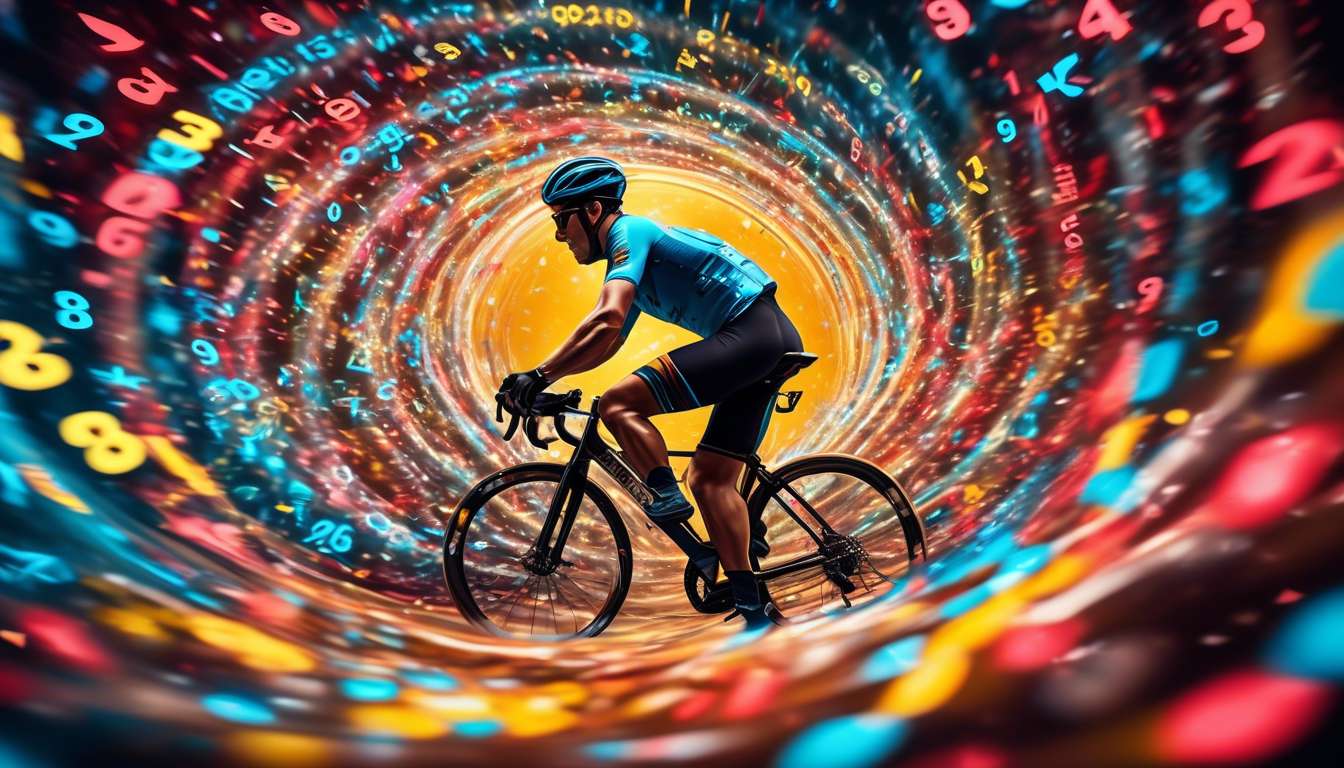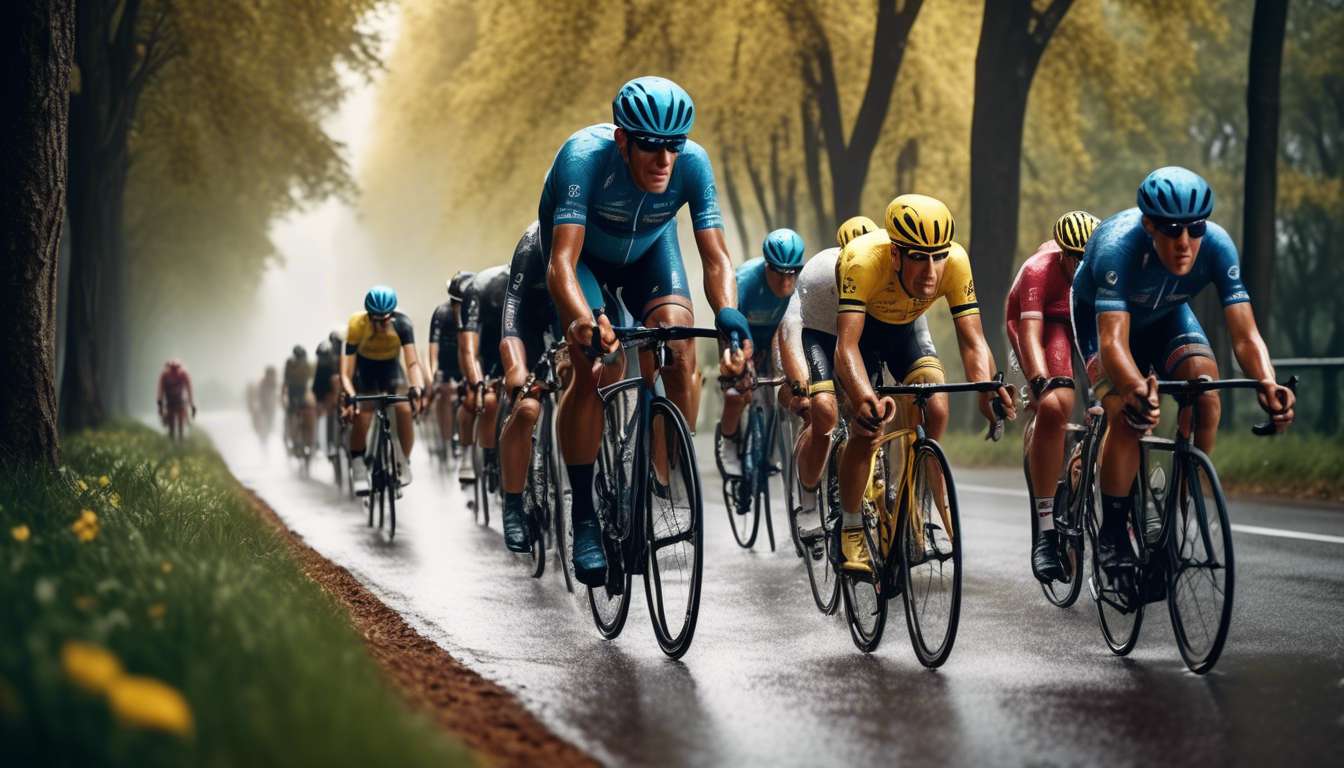As cycling enthusiasts, we often debate which of the Grand Tours truly tests the mettle of the world’s best cyclists: the Giro d’Italia or the Tour de France. Both races, steeped in rich history and tradition, challenge riders with grueling routes, unpredictable weather, and fierce competition.
Yet, the question remains—does the Giro d’Italia’s infamous mountain stages and unpredictable terrain make it tougher than the celebrated Tour de France, known for its own brutal climbs and relentless pace?
Race Comparisons:
Giro d’Italia:
- Infamous for its mountain stages.
- Features unpredictable terrain and weather.
- Known for the breathtaking yet punishing Alps.
Tour de France:
- Celebrated for iconic climbs like Mont Ventoux and Alpe d’Huez.
- Characterized by a relentless pace and brutal climbs.
Physical and Mental Demands:
- Both races require exceptional endurance and skill.
- Riders face intense physical challenges and must maintain mental resilience through grueling stages.
Join us as we embark on this comparative journey to determine which race truly stands as the ultimate test of endurance and skill.
Giro d’Italia Mountain Stages
The Giro d’Italia’s mountain stages challenge cyclists with their steep ascents and unpredictable weather conditions. These grueling tests of endurance draw us in, where the spirit of camaraderie thrives amidst the shared struggle.
As we climb together, battling elements and fatigue, we forge bonds that transcend the individual pursuit of victory. The Giro’s notorious peaks, such as:
- Passo dello Stelvio
- Monte Zoncolan
demand not only physical strength but also mental resilience, pushing us to discover limits we never thought possible.
Unlike the Tour de France, the Giro often surprises us with sudden weather shifts—rain, wind, even snow. These elements add an extra layer of complexity, testing our adaptability and resolve.
We understand that enduring these trials is more than just a personal achievement; it’s a communal triumph. In facing these mighty mountains, we embrace the challenge as a collective, finding belonging in the shared experience of overcoming the Giro’s relentless demands.
Tour de France Iconic Climbs
Few cycling challenges compare to the breathtaking ascents of the Tour de France’s iconic climbs. As we pedal together through the legendary routes, we feel a deep connection with the rich history and shared struggles of cyclists who’ve tackled these peaks before us.
The Alpe d’Huez, Mont Ventoux, and Col du Tourmalet stand as monuments to endurance and determination. Each climb tests our limits, demanding every ounce of strength and willpower.
While the Giro d’Italia offers its own formidable mountains, the Tour de France’s iconic climbs hold a special place in our hearts. The camaraderie we experience, surrounded by fellow enthusiasts who share our passion, fuels us as we conquer these formidable inclines.
It’s not just about the physical exertion; it’s about belonging to a community that embraces challenge and celebrates triumph.
As we ride, we embody the spirit of perseverance that defines both the Giro d’Italia and the Tour de France, united in our quest for greatness.
Terrain and Weather Challenges
Navigating the unpredictable terrain and weather during grand tours challenges our resilience and adaptability as cyclists.
The Giro d’Italia and the Tour de France both test our endurance, but each presents unique hurdles that forge a deep bond among us, the cycling community.
In the Giro d’Italia, we face several challenges:
- Unpredictable Italian weather, ranging from sudden downpours to scorching heat
- Demanding terrain, with winding roads through picturesque but challenging landscapes
These elements push us to our limits, making every kilometer a testament to our perseverance.
Meanwhile, the Tour de France presents its own set of trials:
- Variable weather conditions, from the chilly mountain air to the searing sun on the plains
- Diverse terrain, including cobblestones and narrow village roads, demanding precision and focus
Together, we endure these trials, sharing a camaraderie that only comes from battling nature’s elements alongside one another.
Relentless Pace and Brutal Climbs
Every pedal stroke feels like an eternity as we push through the relentless pace and tackle the brutal climbs that define these grand tours. Both the Giro d’Italia and the Tour de France test our limits, demanding not just physical strength but mental resilience.
We find ourselves in a shared struggle, a collective journey where each ascent binds us together as we conquer legendary peaks.
In the Giro d’Italia:
- We’re often met with steeper gradients that challenge our endurance.
- The Italian climbs, like the Stelvio Pass, are renowned for their severity.
- These climbs push us to dig deep and rise above fatigue.
The Tour de France, on the other hand, offers:
- Longer ascents with its iconic climbs like Alpe d’Huez.
- These climbs demand sustained power and pacing.
Together, we embrace the camaraderie of the peloton, united by the shared experience of battling these relentless courses. It’s in these moments of shared effort and mutual support that we truly belong.
Physical Endurance Demands
Every rider faces immense physical demands as we push our bodies to their limits in these grueling races. Both the Giro d’Italia and the Tour de France test our endurance in unique ways.
-
Giro d’Italia: With its unpredictable weather and varied terrain, this race requires us to adapt constantly.
-
Tour de France: Renowned for its relentless pace, this race demands consistent power output over three intense weeks.
Each race challenges us to dig deep, drawing on every ounce of strength and stamina we possess.
We experience a profound sense of camaraderie, united by the shared struggle against fatigue and discomfort. Together, we embrace the grind, knowing that perseverance is key.
The collective energy and support from our fellow riders and fans fuel our determination. It’s this spirit of unity and shared endeavor that makes the journey worthwhile, reminding us that we’re part of something bigger than ourselves in these epic tests of endurance.
Mental Resilience Requirements
Facing the mental challenges of these legendary races demands unwavering focus and the ability to overcome self-doubt. As we pedal through the Giro d’Italia and the Tour de France, it’s not just our physical endurance that’s tested, but also our mental resilience.
We battle through:
- Unpredictable weather
- Difficult terrains
- The sheer length of each stage
It’s in those moments of fatigue and doubt that we must rally together, drawing strength from our shared experiences and camaraderie.
Both races push us to our limits. The Giro d’Italia’s grueling mountain climbs and the relentless pace of the Tour de France require us to dig deep within ourselves. We rely on our mental fortitude to:
- Maintain focus
- Stay motivated
- Keep pushing forward, even when every fiber of our being screams for rest
Our community of cyclists understands the mental toll these races take, and we support each other through every twist and turn, knowing we’re stronger together.
Ultimate Test of Skill
Both races demand not just physical prowess but also exceptional strategic acumen and technical skills. As we dive into the world of cycling, we recognize the Giro d’Italia and the Tour de France as ultimate tests of skill.
Our hearts beat in unison with the riders as they navigate treacherous terrains and unpredictable weather.
Giro d’Italia
The Giro d’Italia challenges us with its winding mountain routes, often covered with snow. This race demands not only endurance but also precise bike handling.
We feel the pulse of the peloton, making split-second decisions that could define the race.
Tour de France
In the Tour de France, the challenge is equally formidable. We find ourselves strategizing alongside riders, balancing the need for speed on flat stages with the grueling climbs of the Alps and Pyrenees.
Our shared understanding of the intricacies involved solidifies our place in this passionate cycling community. Key elements include:
- Drafting
- Positioning
- Pacing
Together, we witness these skilled athletes pushing the limits of human potential.
Deciding Which Is Tougher
We find ourselves debating which race truly demands more from its competitors, considering the unique challenges each presents. The Giro d’Italia and the Tour de France both test cyclists’ endurance, but each has distinct features that set them apart.
The Giro d’Italia is known for:
- Unpredictable weather
- Grueling mountain stages that push riders to their limits
Its early position in the cycling calendar often means inclement conditions, requiring not just physical strength but mental fortitude.
On the other hand, the Tour de France is renowned for:
- Its sheer scale and visibility
- The pressure of performing on cycling’s biggest stage
The relentless pace and the fierce competition demand unwavering endurance and strategic brilliance.
Ultimately, determining which race is tougher may come down to personal preference and perspective. Both the Giro d’Italia and the Tour de France offer a sense of belonging to a tradition of epic challenges, where endurance is celebrated and legends are forged.
How do the dietary and nutritional requirements differ between Giro d’Italia and Tour de France riders?
Dietary and Nutritional Requirements for Riders
When preparing for races like the Giro d’Italia and Tour de France, it’s essential to tailor dietary intake to meet the unique challenges of each race.
Key Components:
-
Balancing Macronutrients:
- Carbohydrates: Provide sustained energy levels.
- Proteins: Aid in muscle recovery.
- Fats: Offer an essential energy reserve.
-
Hydration:
- Maintaining proper hydration is crucial for optimal performance and recovery.
-
Meal Timing:
- Properly timed meals are essential to optimize performance, ensuring that energy is available when most needed.
Overall Approach:
It’s all about fueling the body smartly to effectively tackle the grueling stages ahead. By focusing on these components, riders can sustain energy, enhance recovery, and perform at their best.
What are the recovery strategies used by cyclists in both Giro d’Italia and Tour de France?
To recover after intense rides in both the Giro d’Italia and Tour de France, cyclists rely on various strategies to rejuvenate their muscles, reduce inflammation, and replenish energy stores.
Key recovery techniques include:
- Massages: Help in relaxing muscles, improving circulation, and alleviating soreness.
- Ice baths: Reduce inflammation and muscle soreness by constricting blood vessels and decreasing metabolic activity.
- Proper nutrition: Replenishes energy stores, with a focus on carbohydrates for energy restoration and proteins for muscle repair.
By prioritizing recovery, cyclists can ensure their bodies are ready for the next day’s challenges, allowing them to perform at their best throughout these demanding races.
How does the length and duration of each race impact the overall difficulty for the cyclists?
The length and duration of each race greatly impact the overall difficulty for cyclists.
The longer and more grueling the race, the more demanding it is on our bodies and minds. Endurance becomes key, and we must carefully pace ourselves to ensure we have enough energy to complete each stage.
The physical and mental toll of these intense races is immense, but the challenge is what drives us to push our limits and strive for greatness.
Conclusion
In conclusion, determining whether the Giro d’Italia is truly harder than the Tour de France is a subjective debate. Both races present unique challenges that test a cyclist’s physical and mental limits.
- The Giro’s relentless pace and brutal climbs
- The Tour’s iconic ascents and demanding terrain
Ultimately, both events serve as the ultimate test of skill and endurance in the world of professional cycling.




